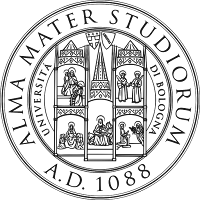If a tree falls in
the forest and no one is around to hear it, does it make a sound?
Okay, that first
line is simply a pun on the title of today’s post. Now for the actual stuff. I’m
a month into summer break and ruminating on ideas for my classes in the Fall.
This past semester, I had two students help me generate in-class activities
(and themes) to promote creative thinking while at the same time solidifying
some of the more challenging chemical concepts. The photoelectric effect and
the three-dimensional visualization of orbitals are two examples.
One challenge is
to find more in-class time to run these activities. So, Idea #1 for my first
semester General Chemistry class involves revisiting take-home midterm exams. I
tried this two years ago with mixed results. The thought was that
students would use the exam as a self-assessment. Study up; then take the exam
under “exam conditions” – closed-book, timed, individual. Students received full
participation credit for turning in the exam regardless of how they actually
performed. I “graded” the exams so they would see how they did and learn from
any errors. Unfortunately, some students did not adhere to the exam conditions
(I could tell when grading) and others might not have reflected on their
performance because mistakes didn’t affect their grade. The strong students
still did well on the in-class closed-book final exam, but the weaker students
did poorer than in previous years. (The grades for that class are not included
in the analysis I posted last month.)
Anyway, my plan is
to include similar take-home midterm exams once more (under exam conditions),
but add a reflective component. But after that they go through their exam again
and make any comments or corrections in a different color. In this second
“reflective” stage they can consult their notes/textbook, take as much time as
they want, and consult with their classmates. Then I will grade the exam based
on their “best” answers. I fully expect that all of them will get close to full
credit, i.e., it will be the same as giving full participation credit in my
previous iteration, but the students will have engaged in their own formative assessment. I think they will be strongly motivated to do this well, and
more likely to actually take the initial exam under exam conditions.
Idea #2 also
relates to my General Chemistry class. My class will only be composed of
incoming first-year students whereby this is their first college experience.
For a subset of such classes, the college is running a pilot program to
schedule a Magic Hour (yes, that’s what they called it) separate from regular
class time. My class still meets for the usual three hours per week. But then
there will be an extra scheduled hour for integrative activities that involve
students thinking about the liberal arts, learning about college resources, academic
advising, etc. The Magic Hour should not be used for more course content, but
I’m free to structure it in any way I like. My plan is to invite colleagues
from other disciplines to lead a discussion about the intersection between
their field and the sciences. Our college has been pushing for the “first-year
experience” to include more “integration” and for students to appreciate the
“value of the liberal arts”. And yes, those are the buzzphrases used. In the
past I had sprinkled bits and pieces within my regular course content, but I
will experiment moving and expanding those to the Magic Hour, thereby giving me
more in-class time for those other creative activities involving learning
chemistry.
I am also teaching
Quantum Chemistry, one of the dreaded classes for our chemistry and
biochemistry majors because of its high math content. The material is
conceptually difficult, counterintuitive and one needs to understand the math
to get some sense of the abstractness of the quantum world. Students often get
bogged down in the math. Some claim they “understand the concepts” but can’t do
the math, which is an oxymoron in quantum mechanics. However, there might be an
alternative way to assess student understanding other than the traditional exams I’ve been using for many years.
Hence, Idea #3 is allowing
students to potentially replace their lowest midterm exam grade with a written
reflection of the material covered on that exam. To do this, however they will
have to journal regularly each week. The reflection will then draw on their raw
journal entries musing about what they’ve been learning in class – and
hopefully consolidating their understanding. I plan to give them a sample of
what a raw journal entry might look like in the first week of class. I’m hoping
that all students will do some thinking and reflection on what they’re learning
each week regardless of whether they choose to write up the formal reflection.
Yes, it will mean more end-of-semester grading for me, but since I have an
unusually small enrollment in the Fall (half the usual size), it won’t be as
much of a burden.
Those are my three
ideas so far. I’m sure there will be more. I’m also narrowing down three
research project ideas for my three new research students who are replacing the
three students who just graduated. I have plenty of ideas but I need to narrow
these down to give the students the best possible experience. One of my
students will be a senior and the other two will be sophomores, i.e., just
starting organic chemistry. They’re both quite capable (at least from my G-Chem
II class last semester) and my pitch to them was that my origin-of-life
projects would also help them see and learn organic chemistry in a different
context. One of the many goals of involving undergraduates in early research is
for the positive spillover this might have to their coursework but also to
engaging them in their major interest!



















